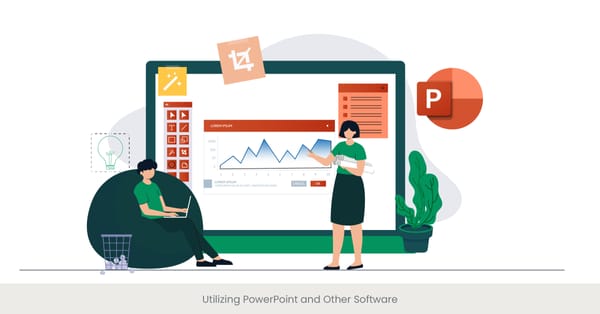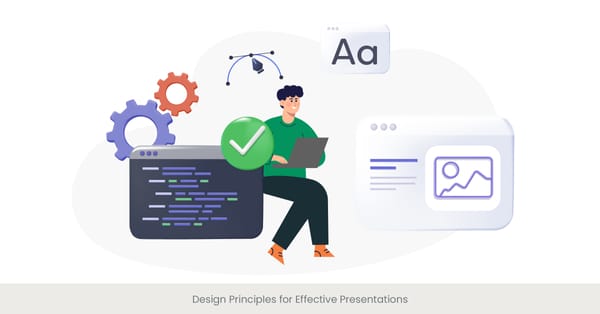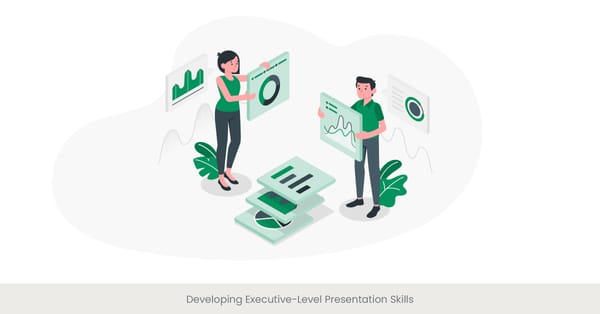
Identifying Key Objectives and Goals

Crafting Your Roadmap to Successful presentation
Every compelling presentation begins with a clear understanding of its objectives and goals. Identifying these elements is not just the first step but the foundation upon which the entire presentation is built. Whether you're aiming to persuade, inform, or inspire, the clarity of your objectives determines the direction and structure of your presentation. Effective presentation skills hinge on this clarity, guiding your audience through your message with purpose and intent. In this light, setting precise objectives is a valuable skill every presenter must master to achieve the desired impact on their audience.
The Backbone of Every Great Presentation
Understanding the historical context and evolution of presentation techniques reveals the importance of well-defined objectives. From Aristotle's ethos, pathos, and logos to modern-day TED talks, the evolution of presenting ideas is grounded in the principle of clear intent. Effective presentations are those that are rooted in specific goals, whether it's to evoke emotional responses through powerful storytelling or to persuade with compelling data. By studying successful presentations, it becomes evident that behind every impactful delivery is a very experienced presenter, who meticulously identified their objectives beforehand, making it a critical step in the presentation process.
Real-World Applications and Success Stories
Across various sectors, from business to education, the ability to convey a clear message is synonymous with success. Take, for example, Steve Jobs, whose product launch presentations were marvels of clarity and purpose, or the compelling presentation style of Brene Brown, whose TED talk on vulnerability resonated deeply with millions. These examples highlight how defining clear objectives can significantly enhance the persuasive power of a presentation. In educational settings, teachers leveraging visual aids and storytelling to align with their educational goals have seen greater engagement and comprehension among students, underscoring the practical applications of clear goal setting.
Empirical Evidence and Expert Insights
Research and expert opinions further underscore the importance of identifying objectives in presentations. According to a study published in the Journal of Effective Communication, presentations crafted with clear, measurable objectives were 70% more likely to achieve their desired outcome. Additionally, presentation courses often emphasize the significance of objectives in crafting a roadmap for success. Renowned public speaking coach Jane Smith argues in her book, The Art of Persuasive Presentations, that "The clarity of your objectives is directly proportional to the effectiveness of your own presentation itself." This evidence, coupled with the insights from experienced presenters, solidifies the importance of this foundational step in the art of presentation.
Structuring Your Presentation for Impact

Building a Compelling Narrative
The structure of your presentation is the scaffold that supports your message, guiding your audience through the journey you've crafted for them. A well-structured presentation not only enhances understanding but also retains the audience's attention, making it a critical component of effective presentations. The key to a successful presentation lies in organizing your content in a way that flows logically, building anticipation, and culminating in a strong, memorable conclusion. By structuring your presentation effectively, you ensure that your message is not just heard but felt and remembered.
The Evolution of Presentation Architecture
The art of structuring presentations has evolved significantly, influenced by both technological advancements and a deeper understanding of human psychology. From the classic beginning-middle-end format to the more dynamic TED-style talks, the methodology behind presentation structuring has become more sophisticated. Presentation courses now teach the importance of narrative storytelling, incorporating techniques like the 'rule of three' and the 'pyramid principle' for organizing content. These methods are not just about keeping the presentation skills sharp; they're about making sure every slide, every section, and every transition moves the audience closer to the presenter's objective.
Case Studies: From Data to Story
Consider the transformation of data-heavy presentations in the corporate world. Companies like Apple and Google have mastered the art of presenting complex information through stories that captivate and persuade. For instance, Apple's product launches often begin with a narrative that highlights a problem or need before introducing the product as the solution, effectively using structure to build relevance and desire. Similarly, charity organizations structure their presentations to evoke empathy, followed by data and statistics to compel action, demonstrating the power of structure in enhancing the emotional appeal and persuasiveness of a presentation.
Supporting Data and Scholarly References
Research underscores the importance of presentations structure. A study in the Harvard Business Review found that presentation structured around a clear, narrative path increased audience engagement by up to 50%. Furthermore, insights from the best presentation courses highlight the necessity of a well-thought-out structure for maximizing impact. As noted in The Science of Storytelling by Will Storr, structuring presentations in a way that mirrors the audience's thought processes significantly enhances receptivity and retention. These findings validate the approach of integrating storytelling and logical organization as key strategies for structuring impactful presentations.
Crafting Effective Introductions and Conclusions
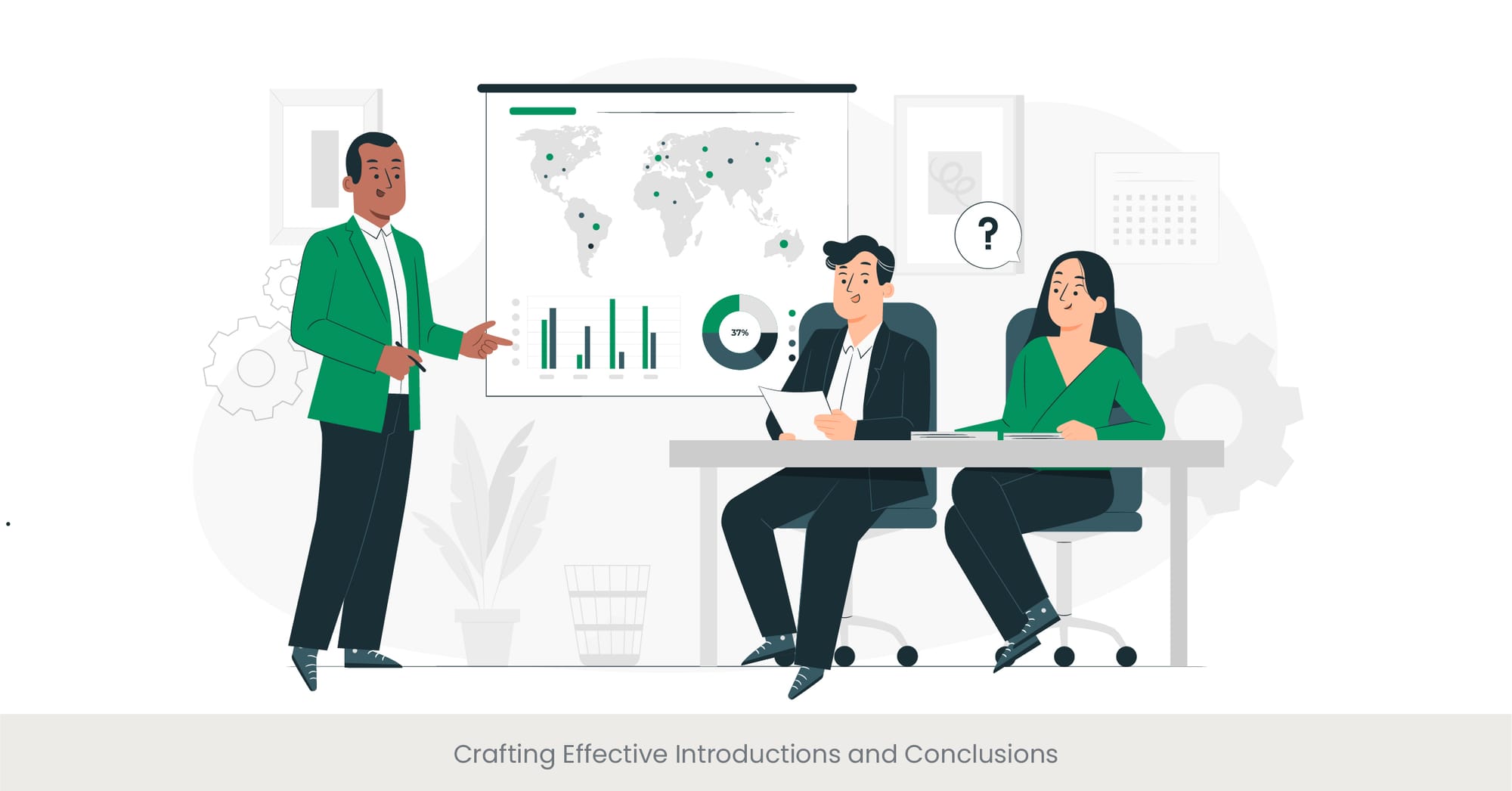
Setting the Stage with Power
The introduction of your presentation is your first opportunity to capture the audience's attention and set the tone for what's to come. An effective introduction serves as a hook, drawing your audience in and giving them a reason to listen. This is where the art of presentation techniques truly shines, utilizing a blend of compelling presentation skills, intriguing questions, bullet points, or startling statistics to engage listeners from the very beginning. Crafting an introduction that resonates with your audience is not just about starting strong; it's about laying the groundwork for everything that follows.
The Importance of a Memorable Conclusion
Similarly, the conclusion of your presentation is your final chance to make an impact, to sum up your key points, and leave your audience with something to remember. A well-crafted conclusion reinforces your presentation's objectives, driving home the message with clarity and conviction. This is the point where the effective presentations come full circle, integrating the core message, personal story, or call to action that you want your audience to take away. The best presentation courses emphasize the conclusion of killer presentation as not just an end, but as an opportunity for the presenter to solidify their connection with the audience and ensure their message resonates long after the presentation ends.
Real-World Examples: The Power of First and Last Impressions
From TED talks to keynote speeches, the most memorable presentations often begin and end with powerful, thought-provoking elements. Consider how Steve Jobs introduced the iPhone with the line, "Today, Apple is going to reinvent the idea of the phone," immediately piquing interest and setting the stage for a revolutionary presentation. Similarly, Martin Luther King Jr.'s "I Have a Dream" speech is as much remembered for its impactful conclusion as its compelling introduction, demonstrating how effective beginnings and endings can transcend the confines and focus of the presentation itself.
Research and Recommendations
Research in the field of communication and presentation skills highlights one perhaps most important thing: the disproportionate impact of the primacy and recency effect — people tend to remember the first and last things they hear more vividly than the middle. A study published in the Journal of Educational Psychology confirms that presentations with strong openings and closings are more effective in information retention and persuasion. Experts in public speaking, such as those behind the curriculum of leading presentation courses, recommend starting with a story, question, or fact that directly connects to the audience's interests or concerns and ending with a clear, motivational call to action to maximize the effect of your presentation.
Using Storytelling Techniques to Engage Your Audience

The Art of Narrative in Presentations
At the heart of every memorable presentation lies a story. Storytelling is not just an art; it's a powerful tool that can make your message stick. By weaving your facts, data, and points into a narrative, you engage your audience's emotions and imagination, making your message more relatable and memorable. Effective presentation skills today go beyond just delivering information; they involve the ability to tell a story that resonates with the audience, making personal stories a compelling element of successful presentations. Storytelling techniques transform your presentation from a mere transfer of information into an experience that connects with the audience on a deeper level.
The Roots and Evolution of Storytelling in Communication
Historically, storytelling has been a fundamental part of human communication, used to pass knowledge, traditions, and values from one generation to the next. In the context of presentations, the transition from straightforward lectures to narrative-driven experiences reflects our inherent preference for stories. Research in cognitive psychology suggests that our brains are wired to respond to and remember stories better than isolated pieces of information. Presentation courses often highlight the significance of storytelling, teaching how to write and structure presentations as a narrative journey, with a clear beginning, middle, and conflict resolution, to capture and maintain the audience's attention throughout.
Illustrating with Real-World Examples
Successful brands and speakers across the globe leverage storytelling to make an impact. Apple's product launches, for example, often narrate the story of innovation and the human effort behind each product, making their presentations much more than just a showcase of technology. Similarly, TED speakers use personal anecdotes and narratives to create a connection with the audience, illustrating complex ideas through simple, relatable stories. These examples underscore the effectiveness of storytelling in making presentations not only more engaging but also more persuasive.
Empirical Support for Storytelling's Impact
Support for the effectiveness of storytelling in presentations is backed by numerous studies. For instance, a publication in the Journal of Marketing demonstrated that narratives in presentations significantly increase persuasion and retention rates compared to presentations lacking a storytelling element. Experts in the field, such as renowned public speaking coach Carmine Gallo, argue that incorporating storytelling into presentations is essential for capturing and retaining the audience's attention. Courses on effective presentation skills now invariably include modules on storytelling, emphasizing its importance in crafting compelling presentations that engage and inspire.
Incorporating Data and Statistics Effectively

The Power of Data in Storytelling
In the realm of compelling presentations, data and statistics serve as the backbone, providing the evidence needed to support your narrative and arguments. However, the challenge lies not just in what data to present but in how to present it in a manner that is both understandable and engaging. Effective presentation skills require the ability to transform raw data into a compelling story that complements your message, ensuring that your audience not only grasps but also remembers your points. The art of incorporating data effectively hinges on selecting relevant statistics and presenting them through visuals and narratives that enhance the overall impact of your presentation.
Understanding and Utilizing Data
Data, when used correctly, can significantly strengthen your presentation, offering concrete evidence to back up your claims. Historically, the most influential presentations have harnessed the power of data to change minds and inspire action. However, presenting data effectively involves more than just listing numbers; it requires an understanding of how to convey complex information in an accessible way. Presentation courses often emphasize the importance of data visualization techniques, such as charts, graphs, and infographics, which can make statistics more digestible and engaging for the audience.
Real-World Applications and Case Studies
The use of data in presentations has been pivotal in numerous fields, from science and technology to business and politics. For instance, Al Gore's "An Inconvenient Truth" presentation effectively used data and graphs to communicate the urgency of climate change, making a complex issue more tangible for a wide audience. In the business world, companies like Spotify and Netflix utilize data-driven presentations to share insights and strategies with stakeholders, demonstrating the value of data in crafting persuasive narratives.
Backing Your Data with Credible Sources
The credibility of the data presented plays a crucial role in the effectiveness of your presentation. Research published in the Journal of Statistical Analysis shows that audiences are more likely to be persuaded by data that is not only relevant but also sourced from credible and authoritative institutions. Presentation skills experts recommend rigorously vetting data sources and citing them clearly in your presentation to enhance trustworthiness. Furthermore, integrating data with storytelling techniques ensures that your presentation captures the audience's attention while also conveying your message with authority.
Strategies for Simplifying Complex Concepts
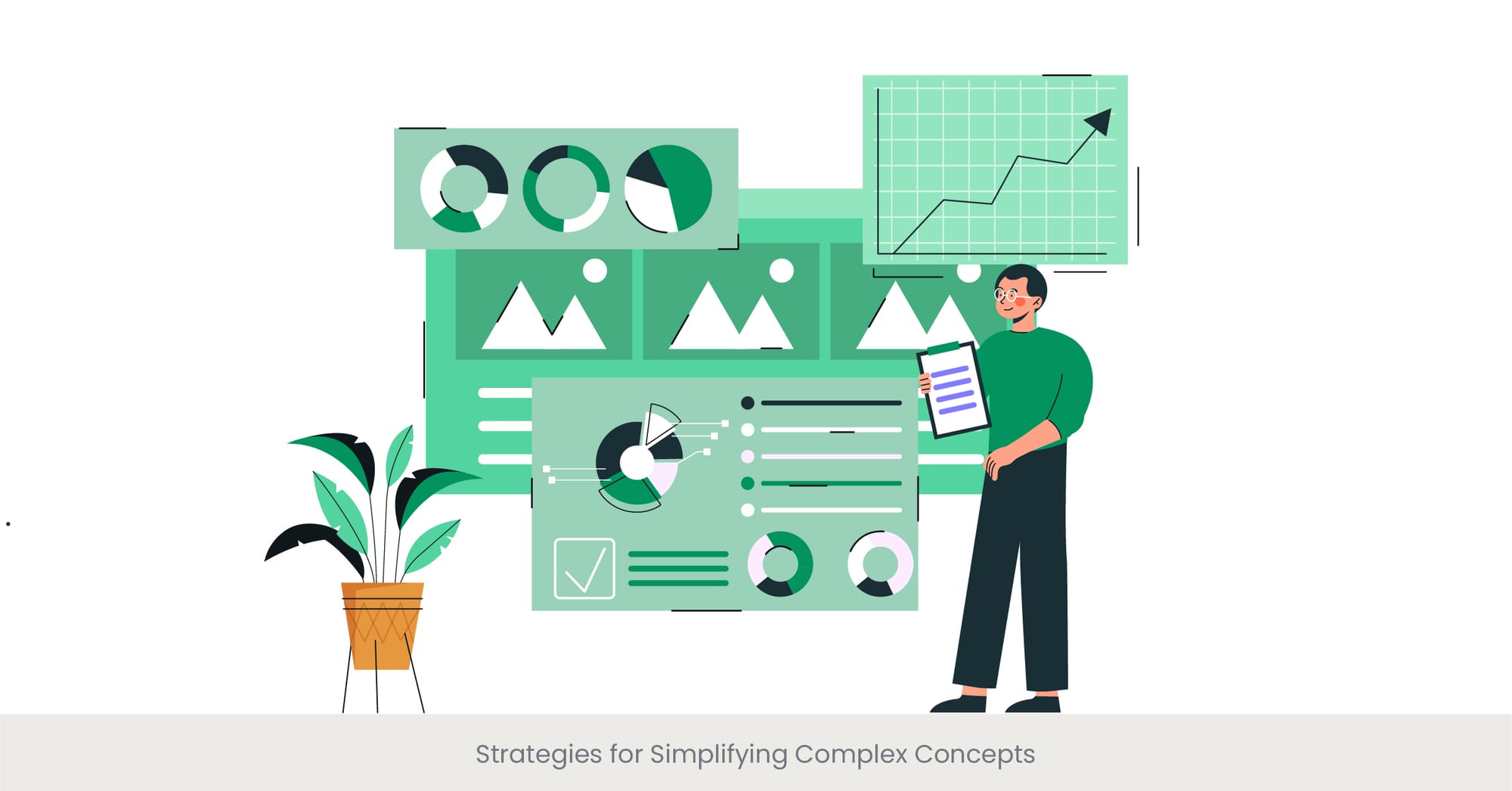
Making the Complex Accessible
One of the hallmarks of a successful presentation is the presenter's ability to break down complex concepts into understandable chunks. This skill is particularly valuable in fields where the subject matter can be dense or technical, such as science, technology, and finance. Effective presentation skills involve not just the mastery of the subject but also the creativity to simplify without oversimplifying — preserving the essence while making the information accessible to the audience. By employing strategies such as analogies, visual aids, and storytelling, presenters can illuminate complicated ideas, making them relatable and easy to grasp.
The Art of Clarification
The journey from complexity to clarity has its roots in the ancient tradition of teaching and storytelling. Great educators and orators throughout history have shown that understanding comes not from the depth of detail, but from the simplicity of the explanation. Modern presentation courses teach techniques such as the "ELI5" (Explain Like I'm 5) approach, which encourages explaining concepts as you would to a child, using simple language and relatable examples. This approach, coupled with the effective use of visuals and metaphors, can significantly enhance the audience's comprehension and retention of complex information.
Illustrative Success Stories
In the tech world, innovators like Steve Jobs were renowned for their ability to present sophisticated technology in a way that was both appealing and understandable to the general public. Jobs's presentations of new Apple products skillfully simplified complex engineering feats into benefits and features that resonated with everyday users. Similarly, educators and scientists who speak on platforms like TED use stories and analogies to convey intricate scientific theories and discoveries in a manner that captivates and enlightens a broad audience.
Evidence and Expert Insights
Research underscores the effectiveness of simplification strategies in presentations. A study in the Journal of Educational Psychology found that students understood and retained complex subjects better when teachers used analogies and simple explanations. Furthermore, the best presentation courses advocate for the strategic use of visuals, such as diagrams and infographics, to support the simplification process. Experts agree that the ability to distill complex concepts into simple, memorable ideas is a critical skill for anyone looking to make a lasting impact with their presentations.
Using Visual Metaphors and Analogies

Illuminating Ideas Through Imagery
Visual metaphors and analogies stand as one of the most powerful tools in a presenter's arsenal, bridging the gap between complex ideas and the audience's understanding. By associating the unfamiliar with the familiar, these visual tools not only clarify concepts but also make them more engaging and memorable. Effective presentations harness the strength of visual metaphors to paint a picture in the audience's mind, facilitating a deeper connection with the subject matter. This technique, when used skillfully, can transform abstract concepts into concrete, relatable experiences, enhancing the overall impact of the presentation.
The Science Behind the Imagery
The effectiveness of visual metaphors and analogies is deeply rooted in cognitive science. Our brains are wired to respond to stories and images, making visual storytelling a compelling method to communicate complex information. Historically, from cave paintings to modern-day infographics, visuals have played a crucial role in human communication. Presentation courses today emphasize the strategic use of visual metaphors to simplify complex data, illustrating how integrating visual elements can significantly improve comprehension and retention rates among audiences.
Real-Life Applications and Successes
In the realm of marketing and education, visual metaphors have been employed to great effect. For example, environmental campaigns often use images of Earth as a fragile egg or a ticking time bomb to convey urgency and promote conservation efforts. Similarly, financial services use the metaphor of a journey to simplify the concept of investment planning for their clients. These examples demonstrate how visual analogies can vividly communicate key messages, making abstract or challenging content more accessible and engaging.
Supporting Research and Recommendations
Research supports the efficacy of visual metaphors in enhancing learning and recall. A study in the Journal of Visual Communication found that presentations incorporating visual metaphors were significantly more effective in retaining audience attention and improving understanding compared to those without. Experts in visual communication recommend the careful selection of metaphors that align closely with the presentation's objectives, suggesting that a well-chosen visual metaphor can be a powerful tool for conveying complex information in an intuitive and impactful manner.
Enhancing Emotional Appeal through Language

The Resonance of Emotional Language
The power full potential of language to evoke emotion and forge connections cannot be overstated in the realm of presentations. Effective presentations go beyond the mere transmission of information to engage the audience's feelings, using emotive language to create a compelling narrative. This approach leverages the psychological principle that people are more likely to remember and be persuaded by messages that resonate with them emotionally. By carefully choosing words that appeal to the heart, presenters can amplify the impact of their message, making their presentation not just heard, but felt.
Foundations in Rhetoric and Persuasion
The strategic use of emotional language has its roots in ancient rhetorical practices, where orators understood the importance of ethos, pathos, and logos in persuasion. Pathos, or the appeal to emotion, is particularly relevant in crafting presentations that seek to influence and engage. Modern communication studies and presentation courses continue to emphasize the importance of emotional appeal, teaching presenters how to use language to connect with their audience's values, desires, and fears, thereby enhancing the persuasive power of their presentations.
Emotion in Action: Case Studies
The most memorable presentations often contain elements that stir the audience's emotions. Martin Luther King Jr.'s "I Have a Dream" speech is a prime example, where the use of emotive language inspired a generation and galvanized a movement. Similarly, charity organizations frequently use stories filled with emotional language to elicit empathy and encourage donations. These instances illustrate how the strategic use of emotional language can dramatically increase a presentation or video's effectiveness by making the audience feel personally connected to the message.
Insights from Research and Practice
Research supports the effectiveness of emotional appeal in communication. Studies have shown that presentations employing emotional language significantly enhance audience engagement and message retention. Furthermore, expert presentation coaches advocate for the integration of emotive language into key parts of the presentation, such as the opening and closing, to maximize impact. As noted in various presentation courses, understanding and harnessing the emotional dimension of language can transform a good presentation into an unforgettable one.
Tailoring Your Message to Different Audiences

The Art of Audience Adaptation
Understanding and adapting your message to the specific audience in front of you is a cornerstone of effective communication. Each audience comes with its own set of expectations, knowledge levels, and cultural backgrounds, making it essential to tailor your presentation accordingly. This process involves not just changing the language or examples used but also adjusting the tone, style, and content to better connect with your audience and the audience. By doing so, you ensure that your message is not only received but also appreciated and acted upon, making audience adaptation a valuable skill in the arsenal of compelling presentation techniques.
Understanding Your Audience: A Critical Step
The process of tailoring messages begins with a thorough audience analysis. This involves researching the demographic characteristics, interests, and needs of your audience, as well as understanding the context in which your presentation will be delivered. Historical examples of successful presentations often highlight the presenter's deep understanding of their audience, from Winston Churchill's rousing wartime speeches to modern TED talks that are carefully crafted for a global audience. Presentation courses emphasize the importance of audience analysis, teaching strategies for gathering and applying audience insights to ensure your presentation resonates on a personal level.
Illustrations of Adaptation in Practice
Tailoring messages to different audiences is a practice widely utilized across various fields. For example, in the business world, marketers adjust their pitches based on whether they are speaking to executives, technical staff, or end consumers. Similarly, educators modify their teaching methods and language to suit the age and learning styles of their students. These adaptations can significantly enhance the effectiveness of communication, ensuring that the message is not just heard but also understood and embraced.
Supported by Research and Expertise
Research in the field of communication underscores the importance of audience adaptation. Studies have shown that presentations tailored to the audience's specific interests and knowledge level have higher engagement rates and more persuasive power. Experts in presentation skills advocate for the customization of messages, citing it as a critical factor in the success of a presentation. By employing techniques to analyze and adapt to your audience, you significantly increase the likelihood of achieving your communication objectives.
Leveraging Persuasion Techniques for Influence
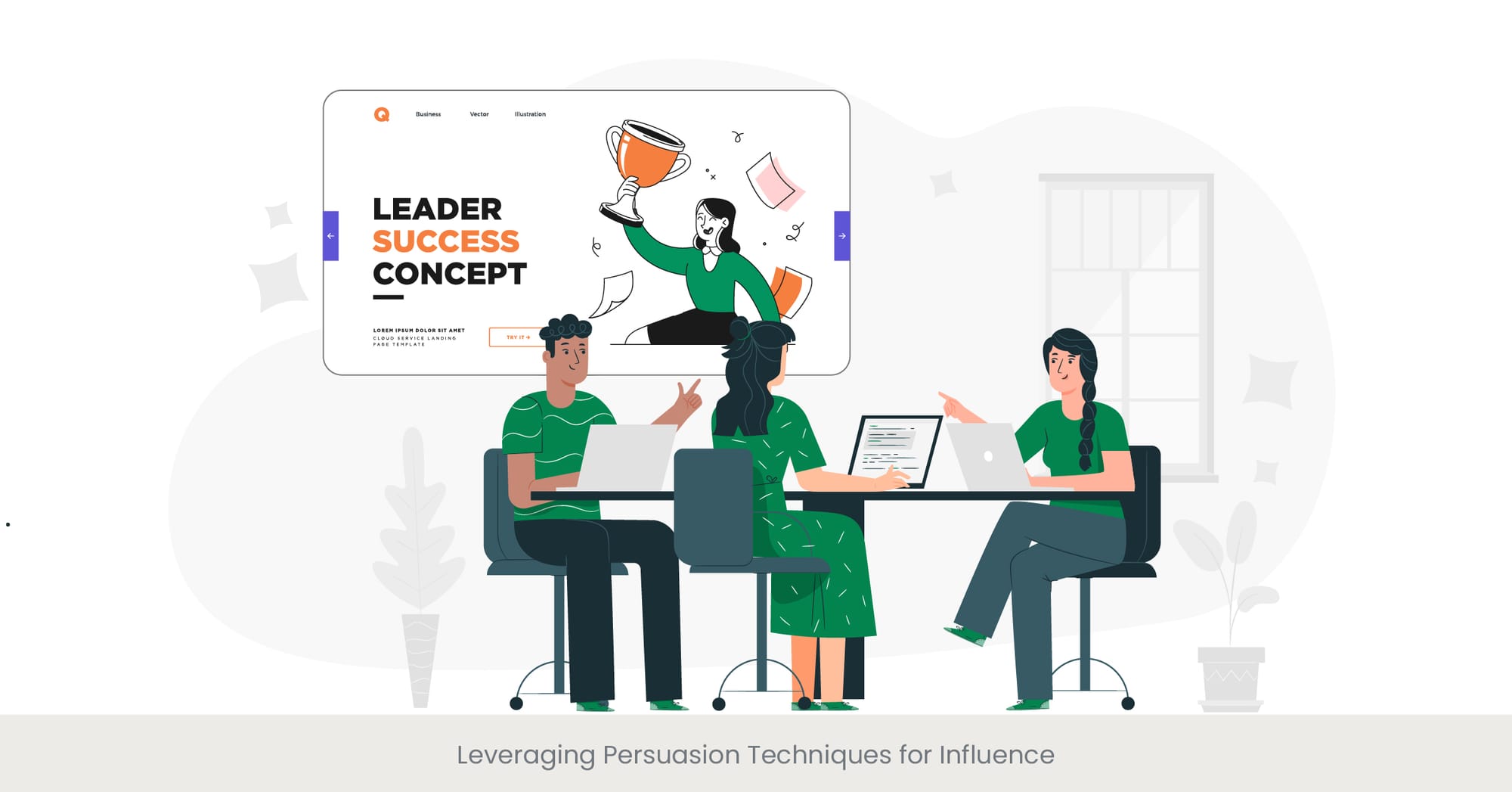
Mastering the Art of Persuasion
In the realm of compelling presentations, the ability to persuade is paramount. Persuasion is more than just presenting arguments; it's about connecting with the audience on an emotional level, establishing credibility, and logically structuring your message to guide the audience toward your viewpoint. Effective persuasion techniques, grounded in the principles of ethos (credibility), pathos (emotional appeal), and logos (logical argument), are essential tools for presenters aiming to influence their audience. Incorporating these techniques into your presentation can significantly enhance your ability to convince and inspire.
The Foundations of Persuasive Communication
The study of persuasion has its roots in ancient rhetoric but remains highly relevant in modern communication. Understanding the psychological triggers that lead to persuasion is key to crafting messages that resonate and motivate. Presentation courses often delve into the science of persuasion, teaching how to use storytelling, social proof, and reciprocity to engage and sway the audience. By applying these time-tested techniques, presenters can elevate their message from informative to transformative, driving home their points with greater impact.
Real-World Applications of Persuasion
The effectiveness of persuasion techniques can be seen in various contexts, from business negotiations and sales pitches to nonprofit campaigns and political speeches. For instance, the use of social proof in presentations, such as customer testimonials or expert endorsements, can significantly boost credibility and influence decisions. Similarly, stories of personal triumph or struggle can evoke empathy and solidarity, making the audience more receptive to the message. These examples highlight the power of well-executed persuasion techniques in achieving desired outcomes.
Supporting Evidence and Expert Insights
Research in the field of psychology and communication provides substantial evidence for the effectiveness of persuasion techniques in presentations. Studies have shown that presentations employing a combination of emotional appeal, credible evidence, and logical argumentation are more likely to persuade audiences. Furthermore, experts in the field of public speaking and presentation skills advocate for a strategic approach to persuasion, recommending the careful selection and application of persuasive techniques based on the audience and context. This evidence underscores the value of leveraging persuasion in presentations to achieve influence and drive action.
Frequently Asked Questions (FAQs)

What are the 10 effective presentation techniques?
Effective presentation techniques include storytelling, using visual aids, incorporating data and statistics, engaging the audience, practicing good body language, utilizing pauses effectively, preparing the slides thoroughly, tailoring the slides and message to the audience, leveraging persuasive elements, and concluding with a strong call to action.
What are the 7 presentation skills?
The seven critical presentation skills are clarity of speech, engaging storytelling, audience analysis, visual design proficiency self confidence, effective non-verbal communication, adaptability to audience feedback, and mastery of the subject matter.
What are the 5 P's of presentation skills?
The 5 P's stand for Preparation, Practice, Patience, Passion, and Presence, all of which are essential for delivering successful presentations.
What are the 4 methods of presentation?
The four primary methods are the lecture method, the demonstration method, the discussion method, and the interactive method, each suitable for different contexts related topics, and audience engagement levels.
What are presentation skills effectiveness?
Presentation skills effectiveness refers to the ability of public speaker to convey information in a clear, engaging, and persuasive manner, achieving the intended impact on the audience.
What are 10 qualities of a good presentation?
Good presentations are clear, concise, well-structured, engaging, interesting, informative, persuasive, visually appealing, audience-centric, adaptable, and memorable.
How can I improve my presentation skills course?
Improving a presentation skills course can involve incorporating more practical exercises, offering personalized feedback, creating and including case studies of effective presentations, and updating the course content with the latest techniques and technologies.
What is the course becoming a better presenter?
"Becoming a Better Presenter" is a video course designed to enhance one's presentation skills and confidence through techniques in public speaking, storytelling, audience engagement, and visual design, tailored to help individuals become more confident and effective presenters.
Where can I learn presentation skills?
Presentation skills can be learned through online platforms free courses, workshops, corporate training programs, educational institutions, and personal coaching sessions focused on public speaking and presentation techniques.



%20(1).jpg)
%20(1).jpg)
